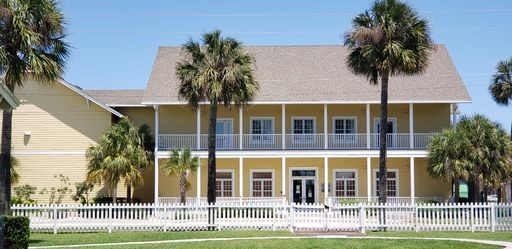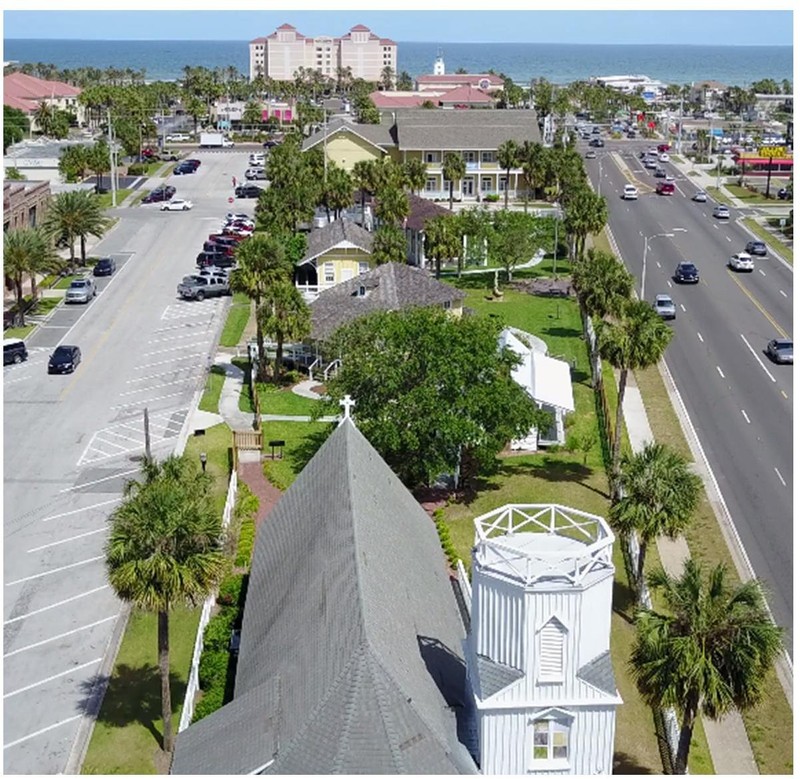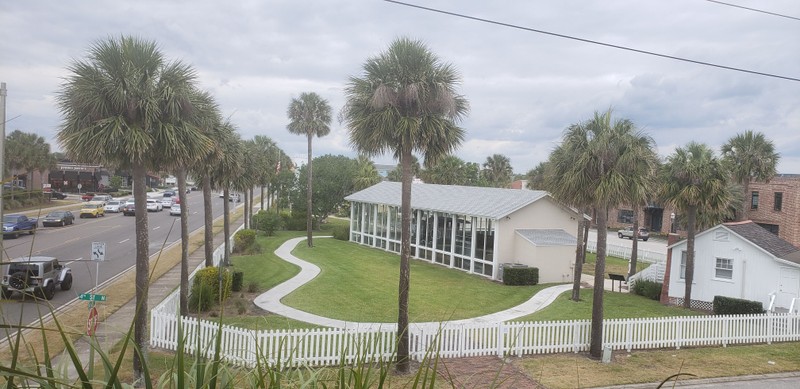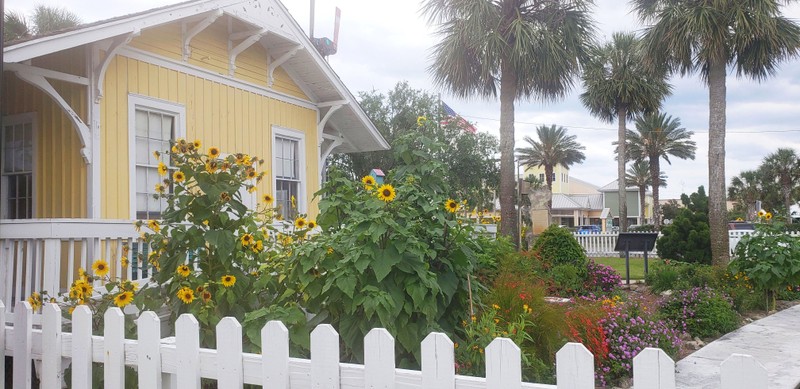This entry includes a walking tour! Take the tour.
Introduction
Text-to-speech Audio
Images
Beaches Museum

Aerial View of History Park from the Chapel to the Museum Building

View of Park form Musem balcony

Park Gardens near the Train Depot

Backstory and Context
Text-to-speech Audio
Museum First Floor
Lobby: The lobby is used to greet visitors, houses the Visitor Center (the only Visit Jacksonville visitor center at the beaches), and is additional space for temporary exhibits that rotate 4 times per year. The lobby also features a 1949 A. E. Backus painting. Mr. Backus is known as the mentor of many of the Highwaymen artists, a group of Florida landscape painters.[i]
Dickinson Gallery: The Dickinson Gallery is a temporary exhibition space. Exhibits change in the gallery about four times a year; the exhibits alternate between historical exhibits created by the Museum or by a local organization and art exhibits featuring local artists.
George A. Pritchard Gallery: The George A. Pritchard Gallery houses the permanent exhibit “Shore Stories Down the Boardwalk” that tells the story of Northeast Florida’s history and culture. “Shore Stories” tells the story of the beaches in three ways: through an introductory video, each community’s unique history, and overriding historical themes.
Museum Second Floor
Archive Reading Room: The reading room can be accessed by appointment for those doing research or looking through the materials easily accessible in the library. The Archive Reading Room contains easy access books, periodicals, Fletcher High School annuals and research information.
The staff offices and the storage areas for the Archives and collections are also upstairs; these are not normally public areas. The Archive includes paper objects, records, maps, photographs, negatives, manuscripts, and personal and business records. The Collections of the Museum includes physical objects significant to the six communities.
Pablo Historical Park
The Pablo Historical Park was set aside as a park by the City of Jacksonville Beach on May 7, 1979. It is used for the display and presentation of items of historical significance and interest to the public. The land comprising of the park was originally part of the Florida East Coast Railway right-of-way. All of the buildings were moved to this site.
Beaches Museum is much more than a place that preserves history. The museum hosts chapel concerts, boardwalk talks, field trips, and community events throughout the year. Springing the Blooms, Train Day, Fletcher All Class Reunion, Polar Express, and Christmas in the Cabin are just a few of the annual events on campus. The facilities are also available for private events including corporate gatherings and weddings. The museum has also recently expanded its online presence to allow access to the Beaches Area history to people around the world.
Cite This Entry
Museum, Beaches and Clio Admin. "Beaches Museum." Clio: Your Guide to History. January 8, 2025. Accessed August 13, 2025. https://theclio.com/entry/99431
Sources
Beaches Museum Extended Docent Guide. Accessed May 9th 2020. https://www.beachesmuseum.org/.
Beaches Museum
Beaches Museum
Beaches Museum
Beaches Museum

